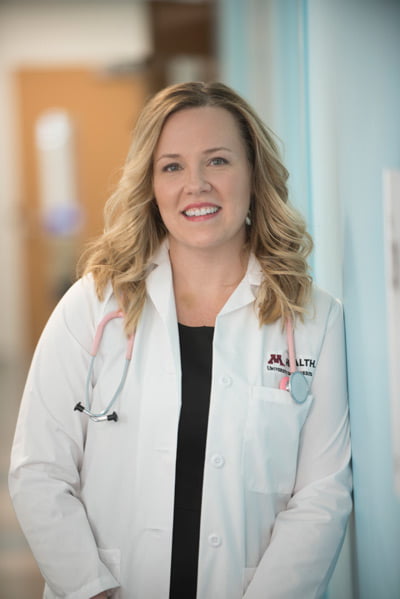After watching patient after patient die following a bone marrow transplant, Dr. Shernan Holtan ’98, assistant professor of medicine in the division of hematology, oncology and transplantation at the University of Minnesota, set out to find a better way to help her patients accept transplanted marrow — and the donor immune system that comes with it.
Holtan, who majored in biology and psychology, rejected the standard approach to suppress the donor immune system, instead pondering how she might “establish peace” between the host and donor immune systems.
The solution dawned on her when she became pregnant with her first son.
“I realized nature already knows how to facilitate immune tolerance. Women carry a half-matched fetus in their womb — a temporary transplant — and clearly the system works the majority of the time without excess immune suppression or rejection,” Holtan said.
Her pregnancy prompted her to initiate clinical trials with her patients to gauge the effectiveness of a medication that’s already available on the market — though traditionally used to treat infertility.
Linking pregnancy to transplants

Holtan’s out-of-the-box solution could help nearly 1.3 million Americans living with or in remission from a blood cancer. For patients who have high-risk for relapsed blood cancer, a bone marrow transplant will provide a new, healthy source of blood cells to replace the damaged, cancerous bone marrow cells and regrow the patient’s immune system. But the transplant come with high risk of graft-versus-host-disease (GVHD), where the transplanted immune system becomes overactive an attacks the host’s body.
“It’s a dangerous procedure, fraught with potential complications. Bone marrow transplant patients walk the fine line of balancing their ability to fight infection with their immune system causing excessive and potentially fatal damage to vital organs,” Holtan said.
The standard treatment for GVHD requires immunosuppressant medications to decrease the activity of the donor immune system, which increases the risk of developing infections. These therapies can cost up to $13,000 a month, and are effective for only half the patients who use them.
Holtan’s proposal is simpler and less expensive than traditional remedies.
Her background research on the natural mechanism of pregnancy revealed that the tissue repair hormone epidermal growth factor (EGF) is found at increased levels in the blood pregnant women. As it turns out, high levels of EGF are present in a hormone supplement made from the urine of pregnant women — a safe and inexpensive drug called Pregnyl.
After finding that circulating EGF was critically low in patients with GVHD, Holtan realized Pregnyl may be a simple way to boost the hormone level in patients and help their body better accept the bone marrow transplant.
From there, Holtan moved to develop clinical trials — an alternative treatment option that builds immune tolerance and helps facilitate repair of damaged tissues, rather than just suppressing the immune system.
“Pregnyl is currently used to help treat infertility and other hormone problems. It’s is a safe, inexpensive drug that’s been available for decades,” she said. “If Pregnyl could be used to help facilitate immune tolerance and to increase the ability to repair tissues from supplementation of EGF, it’s a very practical solution.”
Practical potential
Holtan began applying for grants to help fund clinical trials but faced a lot of rejection because treatment like Pregnyl had never been tried before.
“Many of the grant reviewers thought it would be too risky to support. They wanted a mouse model to show it would work, but I only treat people,” she said.
An announcement for a research grant funded by Regenerative Medicine Minnesota and geared directly toward tissue repair research and clinical trials was her opening.
“As soon as I saw it, I said, ‘This is our chance.’”
Holtan received the grant in 2017, then began conducting clinical trials.
Final results of the trial’s first phase are expected to be available by 2019, but Holtan said early findings from 32 patients suggest the treatment is creating improvements in recovery.
“It’s really great to see my patients with life-threatening GVHD getting better,” she said. “My hope with the clinical trials is that we can show why Pregnyl works and how to best deliver it in terms of dose and duration. I’m hopeful it can help people recovery more fully without excess immune suppression.”
At approximately $50 per dose, Pregnyl would be a much less expensive option than other cell-based regenerative therapies or new classes of immunosuppressive drugs. If the clinical trials end in success, transplant centers around the world, including those in lower resource countries, could adopt it as a less expensive method to help patients.
It’s an exciting potential for Holtan.
“More than any award, I’ve most enjoyed helping people recover,” she said. “I so appreciate seeing a patient many years after surviving a life-threatening condition and knowing I helped. The only possible reward that comes close to that feeling is the hope that my ideas might help patients around the world, patients who I will never meet.”
Holtan discovered her appreciation of research while a student at Hastings College.
“I learned the joy of clinical research through my training and mentorship in the Psychology Department at Hastings College,” she said. “I also learned the immense value in doing research that is practical. At Hastings College, I learned to stay focused, keep my work straightforward, and always keep the ultimate goal of making lives better in mind.”

